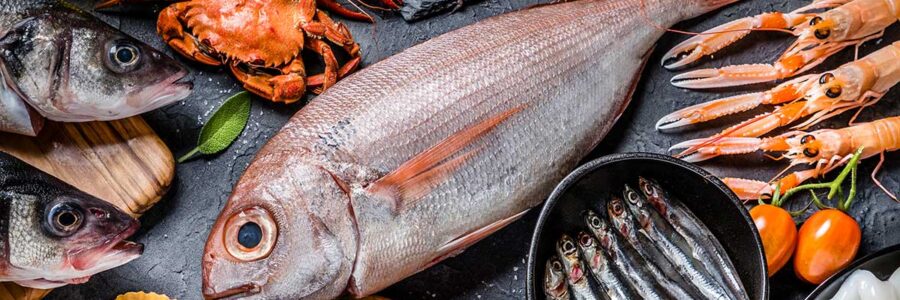In early 2025, a groundbreaking study by Portland State University revealed a troubling truth: microplastics have permeated nearly every species of seafood consumed by humans. The research, which analyzed fish and shellfish from the Oregon coast and local markets, found microplastic contamination in 99% of the samples. This study adds to mounting evidence of the pervasive nature of plastic pollution and its far-reaching implications for human health and marine ecosystems.[1]
At Cell Health News, our focus is on understanding how these contaminants affect cellular function and overall well-being. The findings from this study underscore the need for immediate action to address the microplastic crisis.
Breaking Down the Study
The research examined six popular seafood species: black rockfish, lingcod, Chinook salmon, Pacific herring, Pacific lamprey, and pink shrimp. Key findings include:
- Nearly universal contamination across species, with pink shrimp containing the highest concentrations of microplastics.
- Fibers from synthetic textiles were the most common type of microplastic detected, likely originating from laundry wastewater and degraded fishing nets.
- Lingcod and herring showed rare exceptions, with a few samples testing microplastic-free, possibly due to their feeding habits and habitats.
This study paints a sobering picture of how deeply plastic pollution has infiltrated marine food chains.
The Impact on Human Health
Microplastics in seafood pose significant risks to human health, particularly at the cellular level:
- Chemical Contaminants: Plastics contain endocrine-disrupting chemicals, such as bisphenols and phthalates, which can interfere with hormonal balance and metabolic processes.[4]
- Inflammatory Response: Ingested microplastics may trigger inflammation in the gastrointestinal tract, potentially impacting nutrient absorption and gut health.[5]
- Cellular Stress and Aging: The oxidative stress caused by microplastic exposure accelerates cellular aging, damages DNA, and impairs mitochondrial function.[6]
Environmental Ramifications
Beyond human health, the presence of microplastics in seafood has devastating environmental consequences:[3]
- Marine Life Decline: Many species suffer from reduced growth rates, reproductive failure, and increased mortality due to microplastic ingestion.
- Habitat Degradation: Microplastics alter the structure of marine sediments, impacting benthic species and ecosystem dynamics.
- Persistent Pollution: Plastics fragment into smaller particles over time, creating a virtually indestructible pollutant that continues to harm ecosystems indefinitely.
Taking Action
Addressing the microplastic crisis requires a combination of individual responsibility and systemic change:
- Advocate for Policy Change
- Support international agreements like the Global Plastics Treaty to reduce plastic production and improve waste management.
- Strengthen Cellular Resilience
- Focus on a diet rich in antioxidants, such as vitamin C and E, to neutralize oxidative damage caused by microplastic exposure.
- Reduce Plastic Usage
- Opt for reusable, biodegradable, and non-toxic products to minimize plastic waste.
- Choose Sustainable Seafood
- Seek out local, sustainably sourced seafood to minimize additional contamination risks during processing.
- Educate and Advocate
- Share information about the dangers of microplastics to raise awareness and encourage community-level action.
Conclusion
The January 2025 study highlights a critical issue that demands our attention. Microplastics are no longer an abstract environmental concern—they are a direct threat to human health and marine ecosystems. At Cell Health News, we remain committed to exploring solutions that empower individuals and communities to address this crisis. By prioritizing cellular health and supporting initiatives to reduce plastic pollution, we can take meaningful steps toward a healthier future for ourselves and the planet.
References:
- Microplastics Widespread in Seafood Oregonians Eat, PSU Study Finds | Portland State University. https://www.pdx.edu/news/microplastics-widespread-seafood-oregonians-eat-psu-study-finds. Accessed 29 Jan. 2025.
- Emenike, Ebuka Chizitere, et al. “From Oceans to Dinner Plates: The Impact of Microplastics on Human Health.” Heliyon, vol. 9, no. 10, Sept. 2023, p.
- Ziani, Khaled, et al. “Microplastics: A Real Global Threat for Environment and Food Safety: A State of the Art Review.” Nutrients, vol. 15, no. 3, Jan. 2023, p. 617.
- Weis, Judith S., and Juan José Alava. “(Micro)Plastics Are Toxic Pollutants.” Toxics, vol. 11, no. 11, Nov. 2023, p. 935.
- Smith, Madeleine, et al. “Microplastics in Seafood and the Implications for Human Health.” Current Environmental Health Reports, vol. 5, no. 3, 2018, pp. 375–86.
- Jewett, Elysia, et al. “Microplastics and Their Impact on Reproduction—Can We Learn From the C. Elegans Model?” Frontiers in Toxicology, vol. 4, Mar. 2022, p. 748912.


